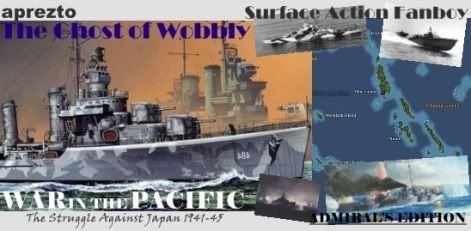barbarossa2
Posts: 915
Joined: 1/17/2006
Status: offline

|
I guess what I am saying is, look at the current supply sources. Pick out the province least deserving of one (in my undereducated and uninformed opinion, Algiers in this case). Then look at the map and make sure that every region which deserves a supply source more than this weakest candidate gets one (for instance, Cologne, Stuttgart, many regions in France, Denmark, etc., etc.). If in the end you have too many supply points, then raise the hurdle.
To do this "objectively" one could generate an Excel spreadsheet which listed each and every province on the map. Then next to it, list the region's population (or best estimate, because these numbers are hard to come by...but you can come close using many regional numbers available in the materials for the period...I am currently compiling such numbers as I come across them), its economic output multiplier (EOM) (this is an art--not a science), and perhaps its average fertility level (AFL) (which is the average fertility of each square mile in the region). Then use something like the following formula to come up with a "relative capacity index":
0.5 population X EOM X 0.5 average fertility level= Relative Capacity Index
Then say you want 30 supply regions. Take the top 30. I think, even by using a rough estimate for each region's EOM, you will come up with a different distribution of supply sources and you will find quickly that Algiers and Tunis don't qualify ahead of Stuttgart, Cologne, and Baden.
I personally don't see any reason to deviate from this type of a method and start assigning "supply points" to regions just to put one there and make it easier to operate in the region (for instance, again, my favorite example...Algiers). There is no reason a region low on the Relative Capacity Index should get a supply source and one much higher up should not. Indeed, I think that is what makes operations around the peripheries of Europe so interesting. That is, the relative difficulty of supply which kept numbers operating there so low.
Oh, and in these regions with difficult supply, light troops should dominate action. Historically, "light troops" (Cossacks, Croats, Austrian Border troops, etc.) excelled at "petty war"--that is attempting to dominate the resources of a region and "forage them". There are several reasons for this which are too lengthy to go into here. However, to reflect this, I would then say that light troops only count half of their numbers towards the total army strength for forage AND that each light cavalry unit also reduces the forage burden of one regular unit in the same army by half. Then if you have to adjust the forage numbers on the map down somewhat to reduce overly large stacks, do it.
Anyway, again, just my two cents and not a major issue for me.
Game design is also a bit of an art, and if there needs to be a supply point in Algiers to keep things "interesting" so be it. :)
However, there is probably a good reason why the coast of north africa was not permanently dominated by foreign powers, but instead by pirates and nomads. For hundreds of years, when the western european powers took colonies in this region, they were generally limited to just a coastal city (for instance Tangier in Morocco was a British colony/possession/base from 1677-1678).
< Message edited by barbarossa2 -- 6/22/2009 9:44:39 PM >
|
 Printable Version
Printable Version

 . Can someone tell me if there is a way to make a city (in addition to the original ones) available to be a new supply source?
. Can someone tell me if there is a way to make a city (in addition to the original ones) available to be a new supply source? 





 Will do alot to deter gamey excessive penetration of enemy lines.
Will do alot to deter gamey excessive penetration of enemy lines.







 New Messages
New Messages No New Messages
No New Messages Hot Topic w/ New Messages
Hot Topic w/ New Messages Hot Topic w/o New Messages
Hot Topic w/o New Messages Locked w/ New Messages
Locked w/ New Messages Locked w/o New Messages
Locked w/o New Messages Post New Thread
Post New Thread